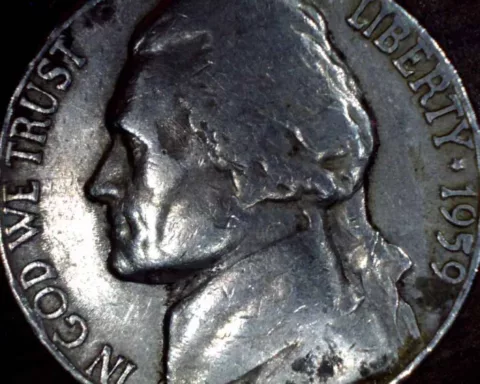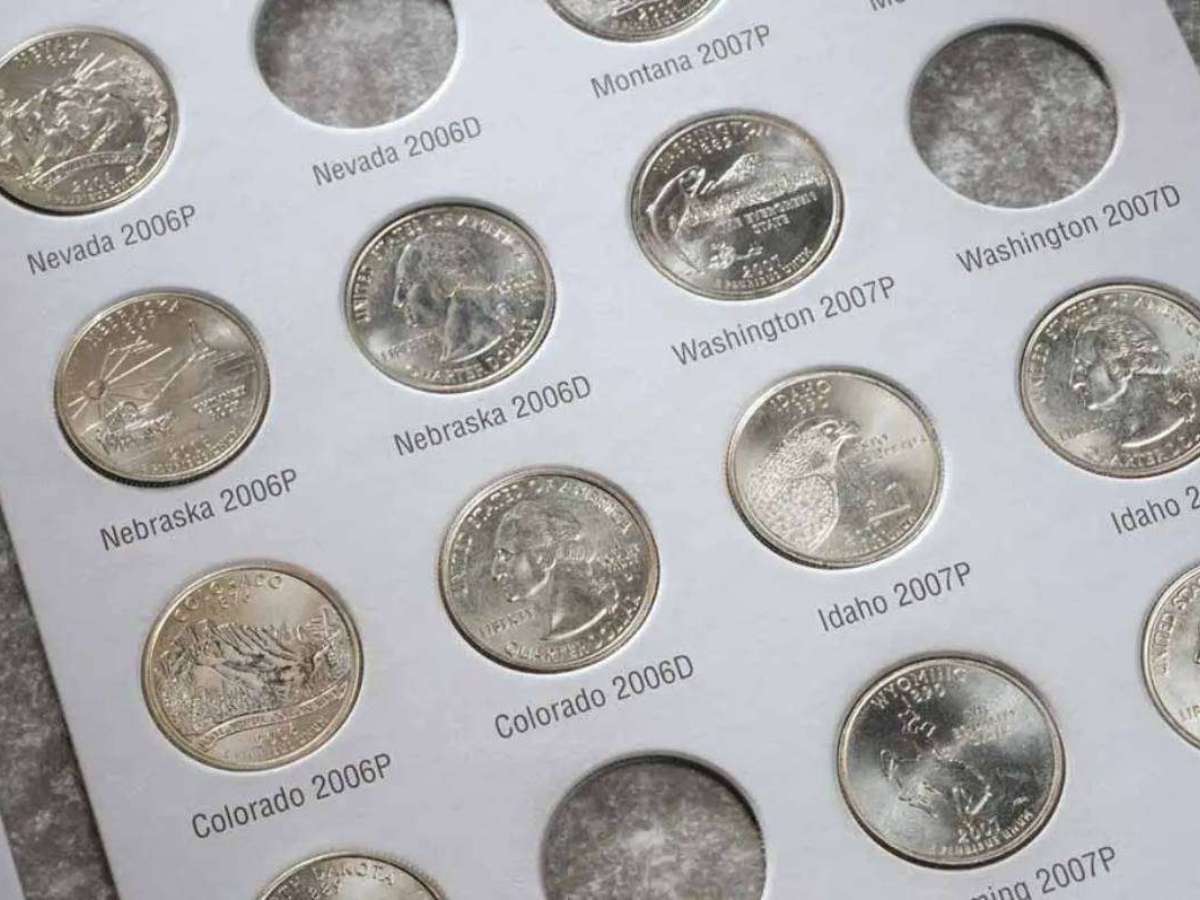
Did you know that 1959 nickels are worth holding onto — rather than spending them?
All 1959 Jefferson nickels are worth at least a little more than face value. Some are worth thousands of dollars!
So, which 1959 nickels are worth lots of money?
Here’s a rundown of all 1959 nickel values — including 1959 nickel errors and varieties…
1959 No Mintmark Nickel Value
The 1959 Jefferson nickel with no mintmark was struck at the Philadelphia Mint. It has a mintage of 27,248,000 — making it much scarcer than many other nickels from the 1950s.
You can still find 1959 nickels with no mint mark in your pocket change, but it’s very challenging since pre-1960 Jefferson nickels are routinely plucked from circulation by observant collectors.
Here’s how much they’re worth:
- A well-worn 1959 no mintmark nickel is worth 8 to 15 cents.
- Uncirculated 1959 nickels without a mintmark have a value of 30 cents to $1.
- The most valuable 1959 Jefferson nickel is a specimen graded by Professional Coin Grading Service as MS67 Full Steps. It sold for $9,694 at a 2017 auction.
1959-D Nickel Value
The 1959-D Jefferson nickel from the Denver Mint carries a “D” mintmark on the reverse (tails side) — on the right between Monticello and the rim of the coin.
The 1959-D nickel is much more common than the Philadelphia strike — with a total mintage of 160,738,240 pieces struck. Many of them still survive in circulation today.
Here’s how much they’re worth:
- The 1959-D nickel is worth about 7 to 10 cents in worn grades.
- Most uncirculated 1959-D Jefferson nickels trade for 20 to 75 cents.
- The record price for a 1959-D nickel is a piece graded MS66 Full Steps by Professional Coin Grading Service, which sold for $3,910 in 2007.
1959 Proof Nickel Value
The Philadelphia Mint struck a small number of special collectors-only Jefferson nickels in 1959. They were made with polished blanks and specially prepared dies.
These extremely well struck coins bearing mirror-like surfaces are known as proofs, and they were sold in proof sets to coin collectors. A total of 1,149,291 proof nickels were produced in 1959.
These coins weren’t intended for circulation, but they are legal tender just the same — and some have been spent as money.
Here’s how much they’re worth:
- Proof 1959 nickels range in value from $2 to $5.
- The record price for a 1959 proof nickel is $7,475 — for a specimen graded by Professional Coin Grading Service as PR68 Deep Cameo.
IMPORTANT: What Is The Grade Of Your 1959 Nickel?
To determine the true value of your 1959 Jefferson nickel, you first need to know what condition (or grade) your coin is in.
Grab a coin magnifier and a copy of the U.S. Coin Grading Standards book. Then, watch this video to see how to grade coins yourself at home:
The best coin grading apps to use when grading coins yourself.
A List Of Rare 1959 Error Nickels And Their Values

Many 1959 nickels have weird things going on with them… Odd grooves, strange colors, even thinner-than-average pieces with porous surfaces that are much lighter than average.
Unfortunately, most of the unusual 1959 nickels you’re going to find in your spare change aren’t errors at all — but rather coins with post-mint damage.
So are there any 1959 errors that are worth looking for?
Yes, and there are several kinds that are worth big money, too!
Let’s take a look at a few of the rare and valuable error nickels you are most likely to find…
1959 Doubled Die Nickel Error
If there’s one type of error variety coin that even non-collectors know about. It’s the doubled die — or “double die,” as so many tend to incorrectly call it.
To date, none of the doubled dies on 1959 Jefferson nickels have been significant. And the ones that have been located generally aren’t worth much money in the grand scheme of things.
You’re most likely to find doubling on a 1959 nickel in Jefferson’s eye or in the lettering on the coin.
1959 Off-Center Nickel Error
One of the more popular types of error coins involves those that are struck off-center.
While all off-center coins are technically errors, only those that are askew by about 5% or more are really worth any significant money.
Most off-center nickels of the late 1950s have values ranging from $10 to $50.
The most valuable types of off-center 1959 nickel errors are those that are about 50% off-center and still show a complete date and (if applicable) mintmark. Such pieces are worth as much as $100 to $200, depending on the condition and magnitude of the off-center error.
1959 Die Break / Die Cud Nickel Error
Any 1959 nickels that look like they have spider webs, squiggly lines, or mounds of flat metal should be held tightly. These may be die cracks and die cuds that you’re seeing — and they can be worth a lot of money to coin collectors who focus on errors and varieties.
These error varieties form when the die producing the affected coin begins to show signs of age- or wear-related damage in the form of breakages that occur across the face of the die. When these cracks cut into the surface of the die, the breaks are transferred onto the finished coin as raised lines or aberrations.
Generally speaking, the larger or more prominent the cracks, the more valuable the error is.
A 1959 nickel with minor die cracks somewhat hidden in and around the lettering may be worth only $3 to $5.
However, die cracks that protrude across a large section of the surface or reach from side to side can bring tremendous values — $25 to $50 or even more.
The most valuable types of die cracks include die cuds — which are flattish, raised blobs of metal that are attached to the rim of the coin and obscure part of the coin’s design. These can bring as much as $125 to $150… or even more.
1959 Repunched Mintmark Nickel Error
In 1959, the United States Mint was still placing mintmarks onto individual dies by hand. Of course, even the professionals at the mint are bound to make mistakes from time to time. And when it came to punching mintmarks onto dies, these little flubs could lend to some interesting errors!
For example:
- Repunched mintmarks are often seen on 1959-D nickels as doubled or tripled “D” mintmarks.
- Some repunched mintmarks take the form of a properly positioned “D” mintmark overlaying a sideways or improperly centered mintmark.
- Other types of mishaps may also be evident.
Most 1959-D repunched mintmark varieties are worth in the neighborhood of $3 to $10. However, more drastic varieties can fetch much higher prices!




